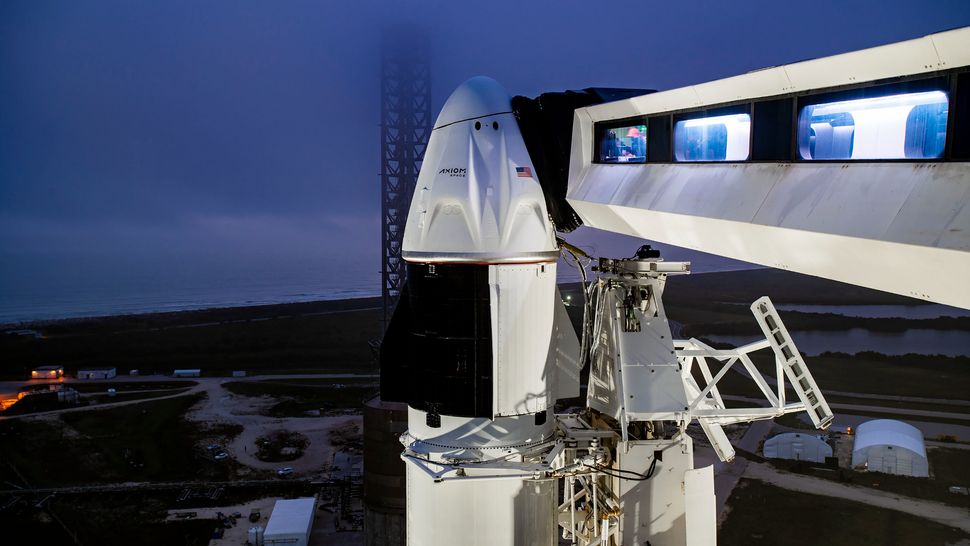SpaceX’s next astronaut-launching rocket has made it to the pad.
SpaceX has rolled out the Falcon 9 rocket and Dragon capsule that will send the private Ax-3 astronaut mission toward the International Space Station (ISS) on Wednesday (Jan. 17), the company announced via X today (Jan. 16).
That liftoff, from historic Pad 39A at NASA’s Kennedy Space Center in Florida, is scheduled to take place Wednesday at 5:11 p.m. EST (2211 GMT). You can watch it live here at Space.com, courtesy of NASA.
Related: Axiom Space names Ax-3 astronaut crew for SpaceX mission to ISS

Ax-3 — the third crewed mission organized by Houston company Axiom Space — will send four people to the ISS for a roughly two-week stay.
Those crewmembers are former NASA astronaut and current Axiom employee Michael López-Alegría, who will command the mission; Italian Air Force Col. Walter Villadei; European Space Agency astronaut Marcus Wandt, who’s from Sweden; and Alper Gezeravcı, who will become the first Turkish citizen to reach the final frontier.
López-Alegría is a citizen of both the U.S. and Spain. So Ax-3 is a very international affair, as he pointed out.
“The Ax-3 mission will be transformational, as it fosters partnerships outside the construct of the ISS, and positions European nations as pioneers of the emerging commercial space industry,” López-Alegría said in an Axiom statement last September.
Axiom Space’s other two missions to the ISS launched in April 2022 and May 2023, respectively. López-Alegría commanded the first one, and record-setting former NASA astronaut Peggy Whitson led the second. (NASA requires that private crewed missions to the orbiting lab be commanded by a former agency astronaut.)
Axiom Space isn’t just about organizing crewed flights to the ISS. A few years from now, the company plans to start launching its own modules to the orbiting lab. This hardware will eventually detach, forming a free-flying private space station in low Earth orbit.